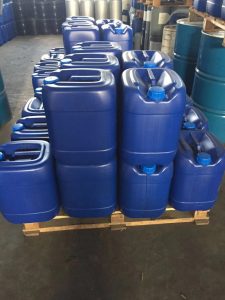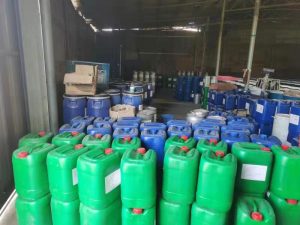Zinc supplementation enters a new era, zinc-rich yeast strength now

Zinc is widely distributed in various tissues of the living body, and its content in the human body is second only to iron. Zinc-containing enzymes (including carbonic anhydrase, alcohol dehydrogenase, carboxypeptidase, DNA polymerase, aldolase, peroxide dismutase), and no less than 70 kinds of non-enzymatic proteins rely on zinc atoms to play their active role. In addition, there are other enzymes (such as arginase, histidine enzyme, lecithinase, enolase) need zinc activation. It is directly involved in the synthesis of nucleic acids, proteins, cell differentiation and proliferation, and many important metabolisms. There are also a number of enzymes in the human body that require zinc to activate and fulfill their active roles. Zinc is essential for human growth and development, reproduction and genetics, immunity, endocrine and other important physiological processes, the human body contains a reduction in the total amount of zinc will cause damage to immune tissues, immune function deficiencies, so zinc is known as the “flower of life”.
Zinc-rich yeast is the yeast in the growth process, the zinc element in the environment for absorption and transformation, so that zinc and the yeast body protein and polysaccharide organic combination, thus eliminating the chemical nature of the inorganic zinc and organic zinc on the human body of the toxic side effects and gastrointestinal stimulation, so that the zinc can be absorbed and utilized by the human body in a more efficient and safer way.

1
Study on the existence form and binding morphology of zinc in zinc-rich yeasts
In their analysis of the zinc content of zinc-enriched dry yeast and zinc-enriched fresh yeast, Jia Yi et al. found that the zinc in zinc-enriched yeast includes inorganic zinc on the surface of the cell, as well as organic zinc bound to the cell wall and zinc present in the yeast cell. From the results of the study, it can be seen that the total zinc content of zinc-enriched dry yeast amounted to 5507 ppm, which indicates that this variety of yeast has a strong ability to enrich zinc, and the inorganic zinc content was 10.6%, which suggests that the yeast assimilated inorganic zinc more effectively. The cell wall surface-bound zinc content was similar at 48.1% compared to the zinc-enriched yeasts reported so far. The cell wall is mainly composed of polysaccharides and proteins, etc. It is hypothesized that polysaccharides and proteins play an important role in the complexation and enrichment of zinc ions. It has also been suggested that the phosphodiester bonding of mannose phosphate of yeast cell wall is bonded at site 1, and at the same time it may be negatively charged, so it is possible that the net negative charge of yeast cells may also be the site for complexation of zinc ions.

From the results of the study, it can also be seen that in both fresh and dried yeast, the percentage distribution of zinc content in the cell is relatively similar and mainly distributed in the cell wall, so it can be assumed that the enrichment of zinc in yeast cells is mainly through polysaccharides and proteins in the cell wall.
There have been many foreign reports on the binding mechanism of zinc and protein. From Sarah Macpherson’s research, it can be seen that the fungal transcriptional regulator, zinc cluster protein in the zinc and protein is through the Cys residues and His residues binding, there are three kinds of binding modes: Cys2His2, Cys4 and Cys6, that is, a Zn2+ and two Cys residues and two His residues binding protein, a Zn2+ and four Cys residues binding protein and a Zn2+ and four Cys residues binding protein and a Zn2+ and four Cys residues binding protein and a Zn2+ and four Cys residues binding protein. residues, one Zn2+ and four Cys residues, and one Zn2+ and six Cys residues. Metallothioneins chelated with Cu2+ (Cup1-1p and Cup1-2p) have also been reported to bind zinc ions. In zinc-containing proteins, zinc binds to different amino acid residues, and in addition to the N-atom of the His residue, the Asp residue and the Glu residue provide the -OH for Zn2+ binding. The N-terminus of the protein, on the other hand, is bound to Zn2+ by three Cys residues and one His residue. The cox4 protein contains two Zn2+, one bound to four Cys residues and one bound to three Cys residues as well as one His residue. As for the current study involving relevant data, 48.0% of the zinc in the 5000 ppm zinc-rich dry yeast is in the cell wall-bound form, about 16.8% of the zinc is in the water-soluble protein-bound form, 24.0% of the zinc is in the small-molecule-bound form, and an additional 10.6% of the zinc is in the form of inorganic zinc residues, with the remaining 0.6% or so of zinc present in the yeast organelles.
Of course, the development of yeast zinc is still in the research stage and there are still many imperfections. First of all, the organic active zinc product quality assessment is still a problem, the organic active zinc has been carried out many years of research in the United States, whether it is the Society of Analytical Chemistry (AOAC), or the Association of Feed Control Officials (AAFCO) did not put forward the identification of yeast zinc product quality and the product’s complexation rate and the complexation strength of the method. This is also due to the fact that the binding mechanism between zinc in yeast zinc and yeast has not been fully elucidated, and the formation of organically active zinc from zinc and yeast polysaccharides or proteins needs to be further investigated. Secondly, the mechanism of digestion and absorption of yeast zinc, its localization in specific tissues and its metabolism at the molecular level in the target tissues also need to be further investigated.
2
Advantages and characteristics of zinc-enriched yeast (yeast zinc)
Zinc supplements in China have gone through three stages of development. The first generation was inorganic zinc supplements, including zinc sulfate and zinc chloride. The typical representative of inorganic zinc is zinc sulfate, which is simple in structure and inexpensive, and can eliminate the symptoms of zinc deficiency with moderate supplementation. However, according to the Dictionary of Chinese Medicines, the absorption rate of zinc in the human body is only 7%. Inorganic zinc has obvious adverse reactions, such as loss of appetite, nausea, vomiting, abdominal pain, diarrhea, etc. The second stage is organic zinc supplements represented by zinc gluconate. These products include zinc gluconate, zinc oxalate, zinc citrate, zinc lactate, zinc glycyrrhizate, etc. It is the earliest class of organic zinc to be developed, and it is compared with inorganic zinc, the most notable feature of which is the marked reduction of gastrointestinal tract stimulation, but there is still a certain degree of irritation, and there are mild nausea, vomiting, constipation, and other adverse effects of oral administration. The third stage is zinc-rich yeast as the representative of biological zinc, zinc-rich yeast as the third generation of biological zinc, is the current mainstream of biological zinc research and development.
Zinc-rich yeast, as the third generation of high-quality zinc supplement products, has the following main advantages and characteristics:
2.1 Natural and good absorption: Zinc in zinc-rich yeast has a special absorption mechanism. According to research, zinc combines with proteins in yeast cells, and the zinc proteins are broken down into amino acids or small peptides after entering the human body, which can be rapidly absorbed without the need of carrier transportation. This way of absorption also avoids the interference of food factors (phytic acid, calcium, fiber, phosphate, etc.) that affect zinc absorption.
2.2 Safe and unburdened: The zinc in zinc-rich yeast combines organically with proteins and polysaccharides in the yeast body, and the form of its existence is more consistent with the natural form of trace elements existing in organisms, which has good chemical and biological stability, and the zinc ions are not easy to be dissociated from the gastrointestinal tract, thus eliminating the toxic reactions and gastrointestinal stimulation caused by the inorganic zinc and organic zinc of chemical nature to the human body.
2.3 Utilization of high efficiency: According to the research of Tongji Medical College of Huazhong University of Science and Technology (former Tongji Medical University), the absorption and utilization rate of zinc-rich yeast is as high as more than 70%. Foreign studies found that the bioavailability of zinc-rich yeast is 3.7 times higher than that of zinc gluconate. In summary, zinc-rich yeast has both the biological effects of zinc nutrition and greatly reduces the toxicity exhibited by inorganic zinc, improving the body’s absorption and utilization of zinc. Secondly, zinc-rich yeast also contains rich protein, B vitamins, dietary fiber and a variety of digestive enzymes, as well as biological calcium, iron, selenium and other essential nutrients, to make up for the imbalance in nutrient absorption caused by the traditional zinc supplementation preparations.
To sum up, zinc-rich yeast not only has the biological effect of trace element nutrition, but also greatly reduces the toxicity of trace element inorganic salts, and changes the body’s absorption and utilization. Secondly, the use of yeast as a carrier of trace element supplementation lies in the fact that yeast itself is a very good nutrient, dry yeast protein content of up to 40% ~ 50%, these yeast proteins have a very good amino acid composition ratio, rich in essential amino acids, which is conducive to the body’s absorption and utilization.
In a sense, yeast is a better source of protein than cow, sheep, chicken and fish. At the same time, yeast is also an excellent source of B vitamins, at present can not find another food containing B vitamins so rich; coupled with the yeast cells contain α-amylase, protease, hemicellulase, phosphatase, etc., the mother of food (medicinal yeast) has been used as an aid to digestion.
Zinc deficiency is common in both humans and animals, and the prevention and treatment of zinc deficiency is becoming increasingly important. With the rapid rise of molecular biology, the acquisition of high zinc yeast strains on a molecular basis will surely lead to a bright future. We should increase and advocate the research and development of the fourth generation of organic active zinc – yeast zinc, as far as yeast zinc is concerned, not only in the active form of zinc binding with organisms, but also in the low toxicity and nutritional value of yeast zinc. In short, from the perspective of development, the large-scale application of organic zinc will become a trend.